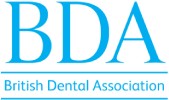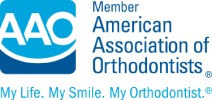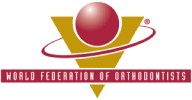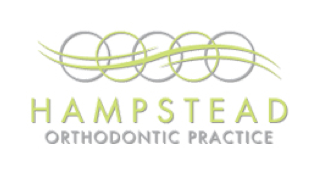Glossary of Orthodontic Terms
Adjustments
Patients with braces receive regular follow-up visits so that their orthodontist can tighten and or replace the wires, springs, or elastic bands. These adjustments are needed as your teeth move throughout your treatment.
Anterior
These are a group of teeth located at the front of the mouth, specifically the incisors and canine teeth.
Appliance
Devices that are designed to aid in the movement and positioning of your jaw and teeth throughout orthodontic treatment. Appliances are either fixed to the teeth or removable.
Archwire
An alloy wire that holds a brace together, gently applying pressure to your teeth so that it can correct irregularities move them into their desired position.
Bands
Bands are fitted around your back teeth (molars) and hold the “archwire” into place.
Bite
This refers to the way your upper and lower teeth make contact either during chewing or at rest. Also known as an “occlusion”.
Bonded retainer
A thin plaited wire – used to keep teeth in their current position.
Bonding
A procedure that involves the application of brackets or other permanent appliances to your teeth by use of a specially-made, non-toxic glue.
Bracket
Brackets can be metal, ceramic or clear and are there to hold and support the archwire, that helps move the teeth into place. Certain types of brackets have hooks that are used to attach orthodontic bands.
Buccal tube
A small metal type tube used to hold elastics to orthodontic appliances and other auxiliary pieces that help move the teeth.
Cephalmotetric x-rays
An x-ray sometimes referred to as a “ceph” that is used to capture a full view of your skull. They are primarily used for orthodontic treatment planning.
Consultation
A consultation is an appointment with the principal orthodontist, Dr Angelos Alvanos. A full dental health examination will take place and photographs of the teeth will be taken. These photographs will be used by the doctor to analyse the best treatment plan for you. An x-ray may also be taken, if necessary, to check that there are no underlying dental conditions the orthodontist should be aware of. After the appointment, a detailed letter will be sent to you and a full report to your general dentist, if necessary, disclosing what has been found at the consultation and possible treatment options, if any.
Crossbite
This type of bite occurs when the upper teeth are positioned within the inside of the lower teeth – or vice versa – when the jaw is closed.
Debonding
The process of removing orthodontic brackets and adhesive residue from the teeth.
Decalcification
White chalky spots that that can develop on teeth when plaque build-up has been allowed to stay for an extended period.
Deep bite
Otherwise known as an “overbite”, this occurs when your upper front teeth excessively overlap with your lower front teeth when the jaw is closed.
Diastema
A space or gap between two teeth. Diastema can form anywhere in the mouth but is most commonly found between the incisors and molars.
Elastics
These are small elastics that fit around the brackets, holding the “archwire” into place.
Fixed retainer
Also known as a bonded retainer, this is a thin plaited wire – used to keep teeth in their current position.
Forsus
An appliance used to help move the upper back teeth (molars) back while moving the lower arch forward.
Functional appliances
These are a popular type of appliance that reduces the projection of the front teeth in patients. Functional appliances (e.g. the “Twin Block”) use the muscle action of speaking, eating and swallowing to apply force to your teeth, align the jaws, and stimulate growth in the upper or lower jaw.
Hawley retainer
One of the most widely recognised orthodontic appliances, it is made of an acrylic plate that curves to the roof of the mouth and is connected to a metal wire that wraps around the front of teeth.
Herbst appliance
A herbst device is used to help correct “overbites” by holding the lower jaw in a forward position.
Impacted tooth
A tooth that is unable to emerge (or only partially) through the gum. This can be caused by the position of the bone or surrounding teeth.
Impressions
An imprint or mould of your teeth and mouth that can be used to create custom orthodontic appliances.
Invisalign
A clear tray (or aligner) which is changed weekly or fortnightly, according to your orthodontist’s instructions. Each aligner moves the teeth little by little into the desired position. The trays are clear and barely visible. The number of aligners is dependent on the severity of the teeth. It is the world’s most advanced aligner system.
Ligature tie
Tiny elastic bands, or metal wire, that attach the “archwire” to the “brackets”.
Malocclusion
A misalignment problem that involves the teeth not properly fitting together.
Mandible
The lower jaw.
Maxilla
The upper jaw.
Mixed dentition
When both permanent and baby teeth can be found in the mouth. This usually occurs between the ages of 6 and 13.
Mouth sores
Small ulcers inside the mouth that can be caused by lips and cheeks rubbing against orthodontic devices. Over time, the inside of your mouth will get used to this irritation, and the sores will stop.
Mouthguard
A protective and custom-made device that is inserted into the mouth to prevent and reduce injury to the teeth, arches, lips and gums.
Occlusion
Also known as a “bite,” this refers to the way your upper and lower teeth make contact either during chewing or at rest.
Mouth sores
Small ulcers inside the mouth that can be caused by lips and cheeks rubbing against orthodontic devices. Over time, the inside of your mouth will get used to this irritation, and the sores will stop.
Open bite
A type of “malocclusion” that where there is no vertical overlap or contact between the front upper teeth (anterior incisors).
Orthodontics
A specialised branch of dentistry that deals with the diagnosis, prevention, and treatment of improperly aligned teeth and jaws.
Orthodontist
A specialist in diagnosing and treating overbites, occlusions, misaligned teeth and jaws.
Orthognathic surgery
A type of surgery that involves altering a patient’s jaws to change its alignment and position.
Overbite
Also known as a “deep bite”, this occurs when your upper front teeth excessively overlap your lower front teeth when the jaw is shut.
Overjet
This is a type of “overbite” where the upper front teeth (anterior) overlap the bottom teeth and protrude outwards towards the lip. It is also known as “protrusion”.
Palate
The roof of the mouth, separating the oral cavity from the nasal cavity.
Palate expander
An expandable device used to widen the upper jaw and palate.
Panoramic x-ray
An x-ray that creates a single image of the entire mouth from left to right. This includes the teeth, upper and lower jaws, surrounding joints and nasal area.
Periodontist
A dental professional who specializes in protecting the support structures of your teeth. This includes your gums, jawbone, and connective gum tissue.
Phase I
This is the name given to early orthodontic treatment typically given to children between the ages of 7 to 10. This initial phase is designed to help orthodontists address any potential problems while the jaws are still growing.
Phase II
This follows “phase 1” orthodontic treatment and generally takes place during early adolescence when all the permanent teeth have come in.
Photograph
Dental photographs that are used for treatment planning, documentation, patient communication, clinical referral and more.
Posterior
This refers to the teeth found at the back of the mouth, specifically molar and premolar teeth.
Power chain
An elastic material that is attached to your teeth by being wrapped around multiple “brackets”. It helps close the gaps between your teeth and applies extra force to help them move faster. It is sometimes referred to as a “C chain”.
Quad helix
A quad helix is an orthodontic appliance for the upper teeth that is cemented in the mouth. The expander works by gently pushing the teeth outwards to eventually widen the upper arch. A quad helix expander is usually given to those who have a narrow top jaw, a cross bite and/or crowded teeth.
Records
Orthodontic records are taken at the start of your treatment and are used by orthodontists as a resource to help them with orthodontic diagnosis and later treatment.
Retainer
A custom-made device that is worn after the active part of orthodontic treatment to ensure your teeth stay in their new positions. Usually made of a clear plastic material – with or without a wire – and can be either fixed or removable.
Self-ligating brackets
A type of brace that uses brackets that are attached to the teeth, along with a small gate that holds an “archwire” in place. This method uses less friction than traditional brackets, which can potentially speed up the treatment and make it more efficient.
Separator
Commonly referred to as “Spacers”, these are rubber bands or metal springs that are placed between teeth to create space for other orthodontic appliances to be inserted.
Space maintainer
This is a custom-made appliance used to maintain space so that a permanent tooth has room to emerge.
TMJ
Short for the temporomandibular joints. This is the name given to the two joints connecting the jawbone to the skull.
Twin block
An orthodontic appliance used to stimulate and lengthen the lower jaw by posturing it forward, while also restraining the forward growth of the upper jaw.
Wax
Known as tooth wax, orthodontic wax is a soft material used to protect the gums, lips and lining of the cheeks. It provides a temporary and comfortable barrier from the sharp areas of your previously installed orthodontic appliances.
Wax bite
A material used to create impressions of your upper and lower teeth in the “bite” position to assist in the making and fitting of custom-made orthodontic appliances.
See how our orthodontists can transform your smile
We are regulated by the

Official members of








